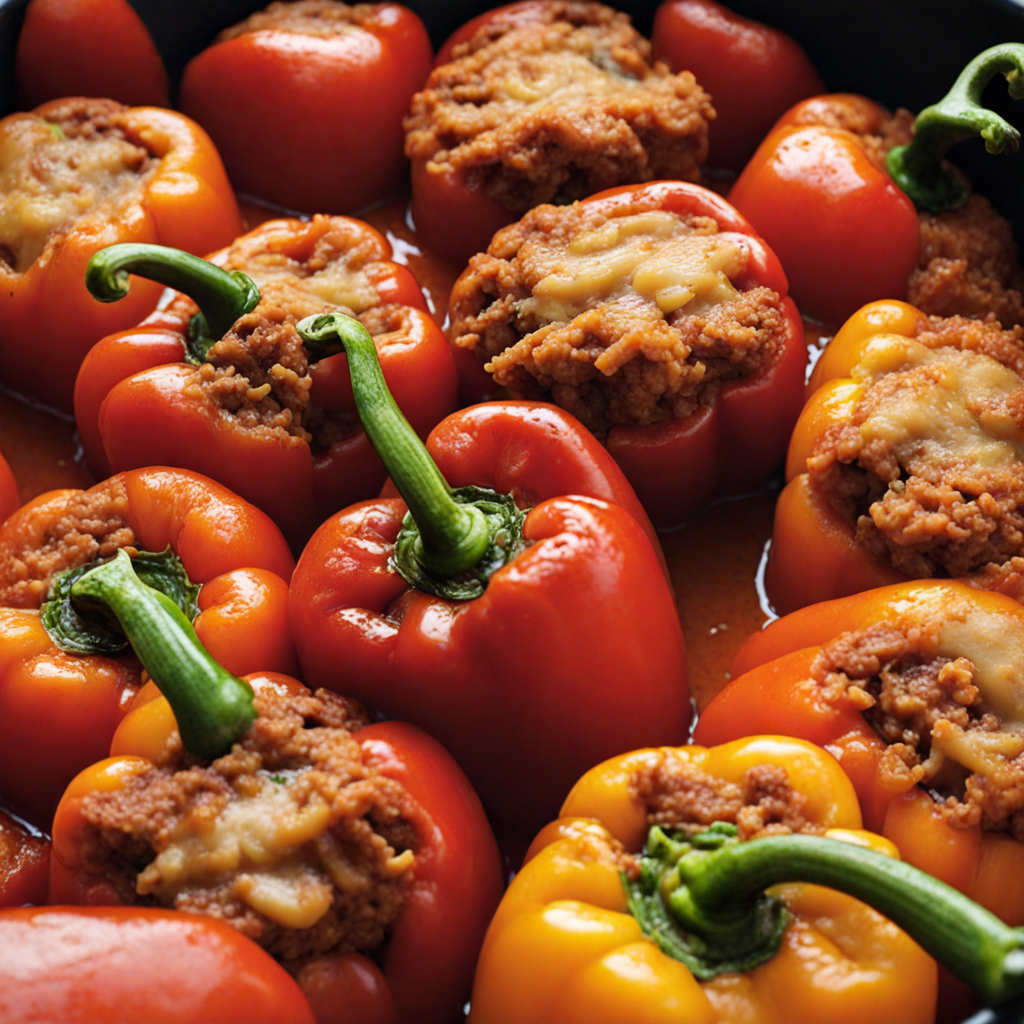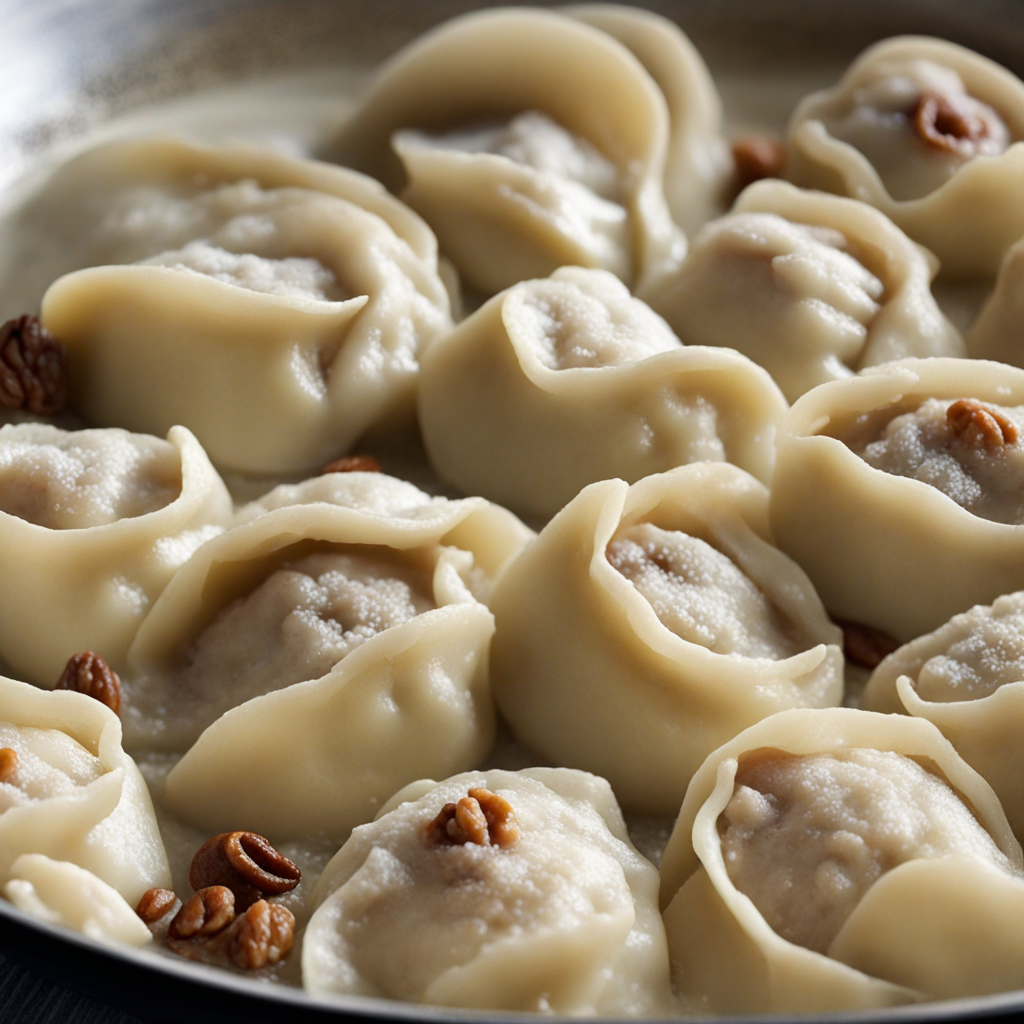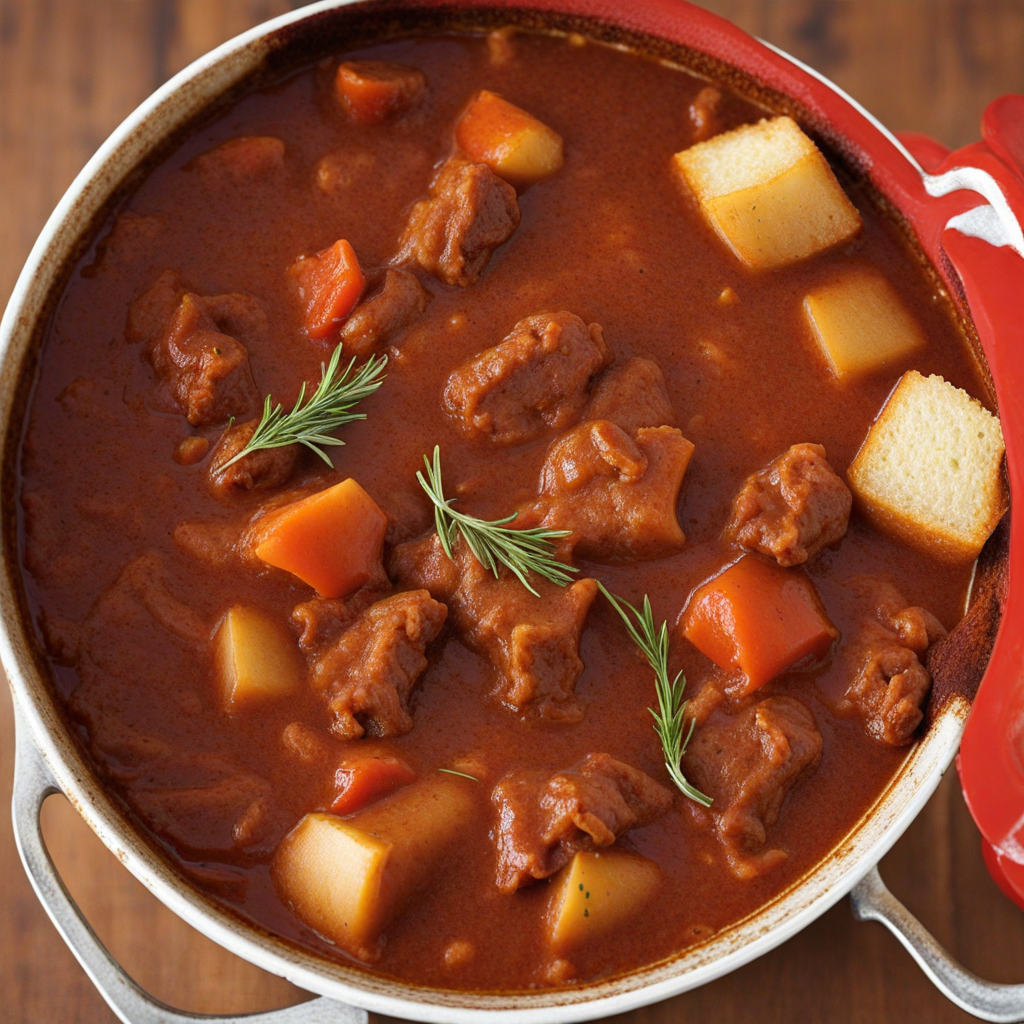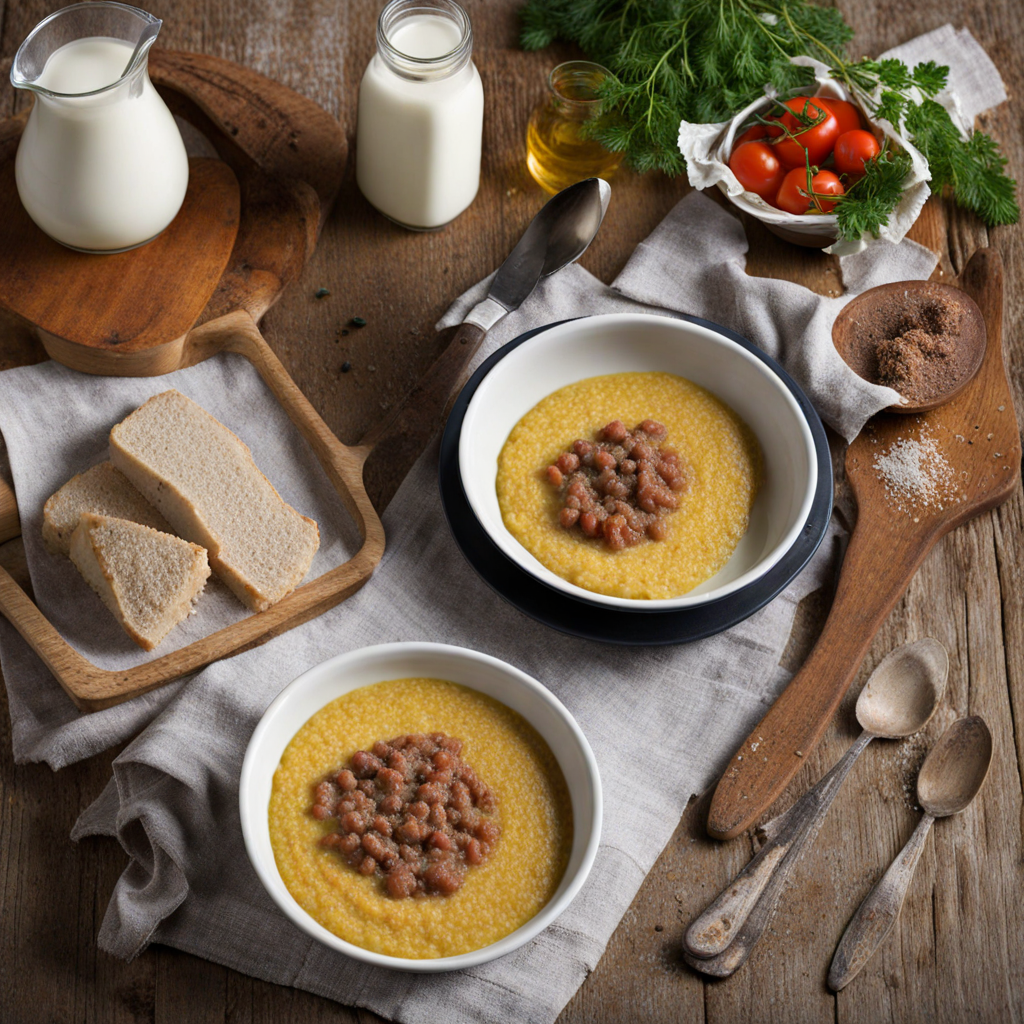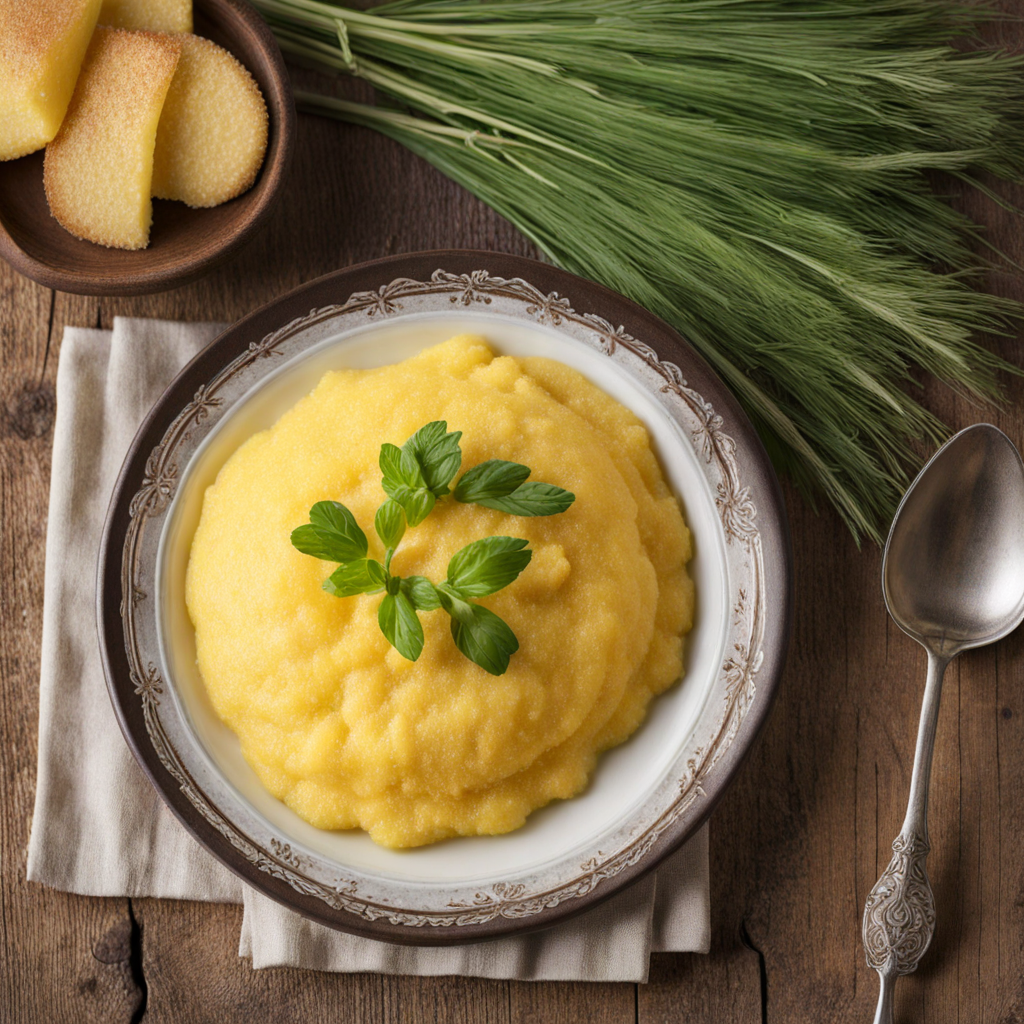Stuffed Peppers
Stuffed peppers, known as "polnjene paprike" in Slovenia, are a delightful dish that beautifully showcases the country's culinary traditions. These vibrant bell peppers are typically filled with a savory mixture of minced meat, rice, and an array of spices, harmoniously blending flavors that reflect the region's agricultural bounty. The peppers are often simmered in a rich tomato sauce, which adds a luscious depth of flavor and enhances the overall experience. Each bite offers a satisfying combination of tender pepper, flavorful filling, and a tangy sauce that makes it hard to resist. The preparation of stuffed peppers varies across households, with recipes passed down through generations, each adding a unique twist. Some may incorporate herbs like parsley or dill, while others might introduce vegetables like carrots or onions into the filling for added texture and taste. The balance of spices is crucial, ensuring that the dish is seasoned just right, allowing the natural sweetness of the peppers to shine through. This dish is not only delicious but also a comforting reminder of home-cooked meals shared with family and friends. Served hot, stuffed peppers are often accompanied by crusty bread or a dollop of sour cream, making them a hearty and satisfying meal. Their vibrant colors and appealing presentation make them a feast for the eyes as well as the palate. Exploring Slovenian stuffed peppers is an invitation to dive into a world of flavors that celebrate the essence of local ingredients and traditional cooking methods, promising a culinary adventure that will linger in your memory long after the last bite.
How It Became This Dish
Polnjene Paprike: A Culinary Journey Through Slovenia Polnjene paprike, or stuffed peppers, are a beloved dish in Slovenia that encapsulates the nation’s culinary diversity and cultural heritage. This dish, while simple in its ingredients, is rich in history and significance, serving as a reflection of Slovenia's agricultural practices, social customs, and regional variations. Origins of Polnjene Paprike The origins of polnjene paprike can be traced back to the broader tradition of stuffed vegetables found throughout Central and Eastern Europe. The concept of filling vegetables with various mixtures is ancient, with influences seen in Mediterranean, Middle Eastern, and Slavic cuisines. Peppers, particularly the sweet varieties, became popular in Slovenia after their introduction from the Americas in the late 15th and early 16th centuries. Slovenian farmers quickly embraced these vibrant vegetables, cultivating them in their gardens. The climate in Slovenia, with its fertile soil and varied weather conditions, proved ideal for growing peppers, especially in regions like Prekmurje and Styria. As peppers became a staple, they were soon filled with an array of ingredients, creating a dish that would evolve into a quintessential part of Slovenian culinary identity. Ingredients and Preparations Traditionally, polnjene paprike are made by hollowing out bell peppers and filling them with a mixture that typically includes ground meat (often pork or beef), rice, onions, and a blend of spices. The filling can vary from household to household, reflecting personal tastes and regional ingredients. Some families might add herbs like parsley or dill, while others might incorporate grated cheese or even mushrooms. Once filled, the peppers are usually cooked in a savory tomato sauce, which enhances their flavor and adds moisture. The preparation of polnjene paprike often becomes a communal activity, reflecting Slovenia’s strong family and community ties. It is common for families to gather together to prepare large batches, especially during harvest season when fresh peppers are abundant. This communal cooking not only strengthens familial bonds but also preserves culinary traditions passed down through generations. Cultural Significance Polnjene paprike hold a special place in Slovenian culture. They symbolize home-cooked comfort food, often associated with family gatherings, celebrations, and holidays. The dish is frequently featured at festive occasions, showcasing its importance in Slovenian culinary customs. In recent years, polnjene paprike have also gained recognition as a symbol of Slovenian national identity. As Slovenia emerged as an independent nation in the early 1990s, there was a renewed interest in traditional Slovenian dishes. The celebration of local cuisine became a way to assert cultural identity and promote national pride. Polnjene paprike, with their rich flavors and heartwarming preparation, became emblematic of Slovenian home cooking. Regional Variations and Development As with many traditional dishes, polnjene paprike exhibit regional variations across Slovenia. In the coastal regions, for example, seafood may be incorporated into the filling, reflecting the local availability of fresh fish. In contrast, the mountainous areas might see the use of game meat, which adds a distinct flavor profile. Additionally, variations in spices and accompaniments can be observed, with some regions opting for a spicier kick while others prefer a milder taste. Over time, polnjene paprike have also adapted to changing culinary trends. As Slovenia has become more integrated into the global food scene, chefs and home cooks alike have experimented with modern interpretations of the dish. Some have introduced quinoa or lentils as substitutes for rice, catering to health-conscious diners and vegetarians. Others have taken a creative approach by using different types of peppers or innovative fillings, such as Mediterranean-inspired mixtures with olives and feta cheese. Celebrating Polnjene Paprike Today Today, polnjene paprike are celebrated not only in homes but also in restaurants and food festivals across Slovenia. Culinary events often feature this dish, showcasing its versatility and deep-rooted history. In addition, local markets and farms sell fresh peppers during the summer months, ensuring that the ingredients for this beloved dish remain accessible to all. Moreover, the dish has gained international recognition, with Slovenian expatriates and food enthusiasts sharing recipes and stories of polnjene paprike around the world. Social media platforms have played a significant role in this cultural exchange, bringing traditional Slovenian recipes to a global audience and allowing for the sharing of personal stories connected to the dish. Conclusion Polnjene paprike, with their humble yet flavorful filling, are more than just a meal; they represent a tapestry of Slovenia’s history, culture, and social fabric. From their introduction alongside the arrival of peppers to Slovenia, to their evolution into a symbol of national identity, these stuffed peppers embody the spirit of Slovenian cuisine. They remind us of the importance of family, tradition, and the joy of sharing food. As Slovenia continues to embrace its culinary heritage while adapting to contemporary tastes, polnjene paprike will undoubtedly remain a cherished dish, celebrated for generations to come.
You may like
Discover local flavors from Slovenia



